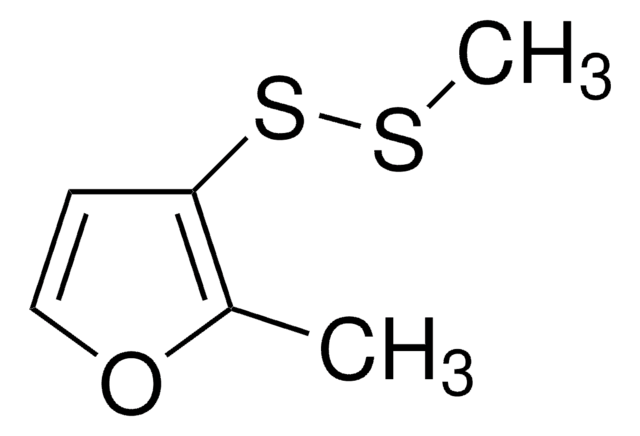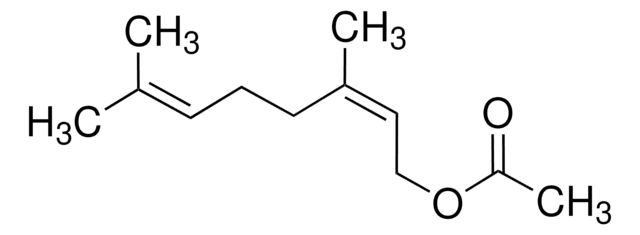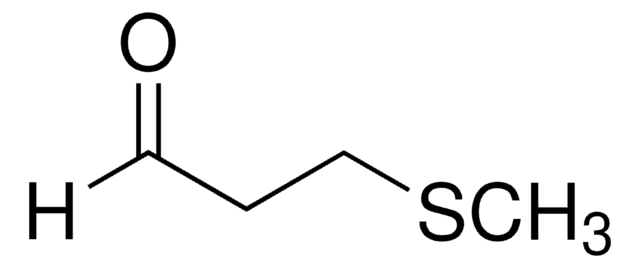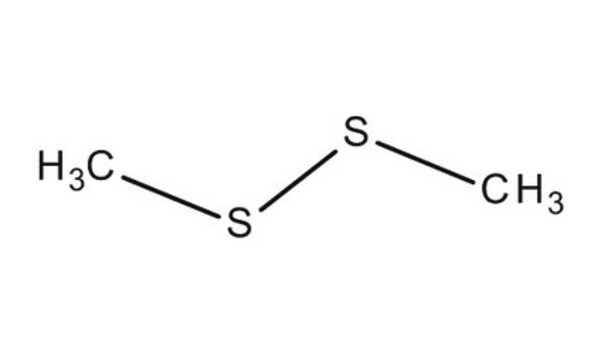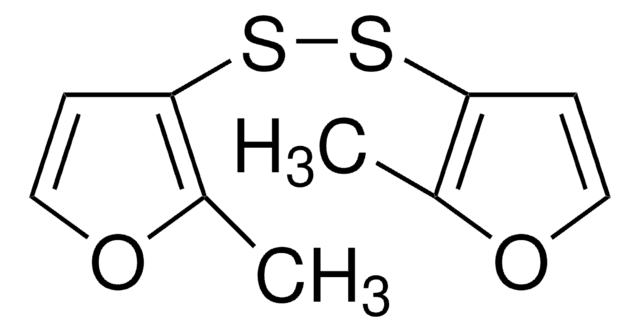W327506
Dimethyl trisulfide
≥98%, FG
Synonyme(s) :
2,3,4-trithiapentane, Methylsulfanyldisulfanylmethane
About This Item
Produits recommandés
Source biologique
synthetic
Niveau de qualité
Qualité
FG
Halal
Kosher
Agence
meets purity specifications of JECFA
Conformité réglementaire
EU Regulation 1334/2008 & 178/2002
Essai
≥98%
Indice de réfraction
n20/D 1.602 (lit.)
pb
58 °C/15 mmHg (lit.)
Pf
−68 °C (lit.)
Densité
1.202 g/mL at 25 °C (lit.)
Application(s)
flavors and fragrances
Documentation
see Safety & Documentation for available documents
Allergène alimentaire
no known allergens
Propriétés organoleptiques
meaty; alliaceous; sulfurous
Chaîne SMILES
CSSSC
InChI
1S/C2H6S3/c1-3-5-4-2/h1-2H3
Clé InChI
YWHLKYXPLRWGSE-UHFFFAOYSA-N
Vous recherchez des produits similaires ? Visite Guide de comparaison des produits
Catégories apparentées
Description générale
Application
- Exploring the binding affinity and characteristics of DcitOBP9 in citrus psyllids.: This study investigates the binding properties of dimethyl trisulfide (DMTS) with DcitOBP9, an odorant-binding protein in citrus psyllids, providing insights into the potential role of DMTS in pest management strategies (Pei et al., 2024).
Mention d'avertissement
Warning
Mentions de danger
Conseils de prudence
Classification des risques
Acute Tox. 4 Oral - Eye Irrit. 2 - Flam. Liq. 3 - Skin Irrit. 2 - STOT SE 3
Organes cibles
Respiratory system
Code de la classe de stockage
3 - Flammable liquids
Classe de danger pour l'eau (WGK)
WGK 3
Point d'éclair (°F)
132.8 °F - closed cup
Point d'éclair (°C)
56 °C - closed cup
Équipement de protection individuelle
Eyeshields, Faceshields, Gloves, type ABEK (EN14387) respirator filter
Faites votre choix parmi les versions les plus récentes :
Déjà en possession de ce produit ?
Retrouvez la documentation relative aux produits que vous avez récemment achetés dans la Bibliothèque de documents.
Les clients ont également consulté
Notre équipe de scientifiques dispose d'une expérience dans tous les secteurs de la recherche, notamment en sciences de la vie, science des matériaux, synthèse chimique, chromatographie, analyse et dans de nombreux autres domaines..
Contacter notre Service technique